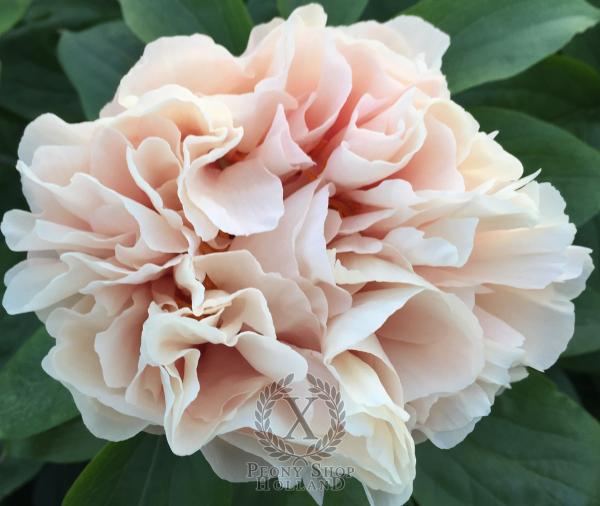Peony Bona Dea
Name Derivation:
Bona Dea' (Latin: [ˈbɔna ˈdɛ.a]; 'Good Goddess')
'Bona Dea' was a goddess in ancient Roman religion. She was associated with chastity and fertility in Roman women, healing, and the protection of the state and people of Rome. According to Roman literary sources, she was brought from Magna Graecia at some time during the early or middle Republic, and was given her own state cult on the Aventine Hill. Her rites allowed women the use of strong wine and blood-sacrifice, things otherwise forbidden them by Roman tradition. Men were barred from her mysteries and the possession of her true name. Given that male authors had limited knowledge of her rites and attributes, ancient speculations about her identity abound, among them that she was an aspect of Terra, Ops, Cybele, or Ceres, or a Latin form of the Greek goddess "Damia" (Demeter). Most often, she was identified as the wife, sister, or daughter of the god Faunus, thus an equivalent or aspect of the nature-goddess Fauna, who could prophesy the fates of women.The goddess had two annual festivals. One was held at her Aventine temple; the other was hosted by the wife of Rome's senior Annual Magistrate for an invited group of elite matrons and female attendants. The latter festival came to scandalous prominence in 62 BC, when the politician Publius Clodius Pulcher was tried for his intrusion on the rites, allegedly bent on the seduction of Julius Caesar's wife, whom Caesar later divorced because "Caesar's wife must be above suspicion". The rites remained a subject of male curiosity and speculation, both religious and prurient. Bona Dea's cults in the city of Rome were led by the Vestal Virgins, and her provincial cults by virgin or matron priestesses. Surviving statuary shows her as a sedate Roman matron with a cornucopia and a snake. Personal dedications to her are attested among all classes, especially plebeians, freedmen and women, and slaves.Approximately one third of her dedications are from men, some of whom may have been lawfully involved in her cult. (Joshua Scholten, Peony Shop Holland, 2020, The Netherlands).
| Size | Weight |
|---|---|
| 3/5 eye | 250 gram |
Peony Bona Dea is an early pink Paeonia hybrid and one of the many special pink Peonies that we grow at Peony Nursery Peony Shop Holland
About peony nursery "Peonyshop.com" Peony Shop Holland Lutjebroek
Peony Growers Peony Shop Holland at this time only centers on building exceptional, exceptional good peonies. It hasn't always been this situation. This specific firm carries an broad back ground starting up in 1875 with Simon Scholten that was growing veggies and fruit for her full time income.
During the year 2001 this specific company created their unique new advertising-name & logo "Peonyshop.com" and after that they started concentrating on developing exclusive peonies. In the year 2002 this business opened up their very own online peonyshop with Peonies & Buxus. In 2003 Joshua Scholten began with breeding peonies. After that in year 2004 this organization started to export peonies from the Netherlands all around European countries, America and even Asia.
Currently our peony nursery is specialized in expanding and increasing the number of exceptional, top quality peony roots that are offered for sale and released world wide. Furthermore the company additionally cut peonies mainly helping the Dutch peony flower market.
The most important things we pride:- The premium quality of our own products
- Our ability to export international
- All of our broad assortment peonies like Bona Dea
- Our crame of large potential seedling peonies
About Bona Dea peony plants
The fall is truly the correct period for growing peony plants. Pretty much all peonies tend to be incredibly long-term-lived plants functioning for approximately fifty up to seventy years, so soon after you have the peonies placed correctly, a person will certainly benefit from them for many years. The plants have a preference for a bright area having a well-drained dirt. A good air flow circulation presented around the peonie can also be significant. These kind of circumstances allow these plants to prevent disease problems. To prepare the planting hole meant for a bareroot peony plant, dig the dirt to the level of 12-18inches. Make use of a garden fork to release the sides of the planting hole at the same time. It is very extremely important and vital that the particular "eyes", or growing nodes, situated nearby the bottom of the old stem, end up no more than Two " under the soil surface.








